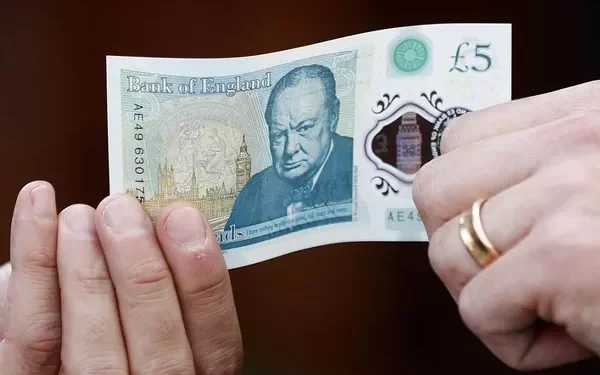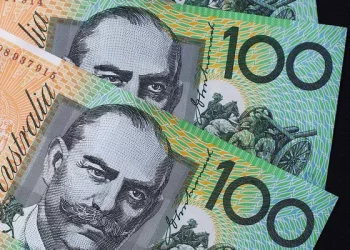The British pound, known historically as the “pound sterling,” is one of the oldest and most influential currencies in the world. Its long history is intertwined with the rise and fall of empires, dramatic economic transformations, and the evolution of financial systems. A common question that emerges for those exploring the world of currencies, especially newcomers to foreign exchange (forex) trading, is whether the British pound is currently backed by gold or silver. To answer this question, we must delve into the history of the pound, the evolution of monetary systems, and how modern fiat currency works.
1. Historical Foundations of the British Pound
Origins of the Pound Sterling
The term “pound sterling” originated in medieval England. In its early form, the pound represented a weight of sterling silver — specifically, one pound by weight of 92.5% pure silver, hence the name “sterling.” The use of silver as currency can be traced back to the Saxon kingdoms around the 8th century. The pound was, at its inception, a tangible asset backed by silver, embodying the value it claimed to represent.
Introduction of Gold as a Backing Standard
Over time, gold began to overshadow silver as a symbol of wealth and stability due to its rarity and value retention. In the 19th century, with the rise of global trade and economic expansion, the British government officially adopted the gold standard. The Gold Standard Act of 1821 formalized this practice, making Britain one of the first countries to establish a monetary system where currency could be exchanged for a fixed amount of gold. The value of the pound became linked to a specified amount of gold, ensuring that the British pound maintained stability and trust in both domestic and international trade.
2. The Transition Away from the Gold Standard
Challenges of the Gold Standard
While the gold standard brought stability and confidence in the currency, it also introduced significant challenges. The primary issue was that it constrained the ability of central banks to respond to economic crises, as money supply was limited to the gold reserves available. Economic downturns, wars, and global financial crises revealed the inflexibility of this system.
The beginning of the end for the gold standard came with World War I. The massive financial demands of the war led Britain, and many other countries, to abandon the gold standard to finance military expenditures without the constraint of gold reserves. Although there was an attempt to return to the gold standard in 1925 under Chancellor of the Exchequer Winston Churchill, it was short-lived due to the economic difficulties of the Great Depression.
Final Departure from Gold
The final nail in the coffin for the gold-backed pound came in 1931 when Britain permanently left the gold standard due to mounting economic pressures and the need for more monetary flexibility. This allowed the British government to issue currency without needing to match it with gold reserves, thereby adopting a fiat currency system.
3. What is a Fiat Currency?
Definition and Characteristics
Today, the British pound, like most major currencies, is considered a fiat currency. A fiat currency is legal tender whose value is not backed by a physical commodity such as gold or silver but rather by the trust and creditworthiness of the issuing government. The value of fiat money comes from the demand for it and the stability of the institution that issues it.
Advantages of Fiat Money
Fiat currencies provide governments with greater control over their economies. Central banks, such as the Bank of England, can use monetary policy tools to manage inflation, stimulate growth, or curb excessive economic expansion. Unlike a gold or silver-backed currency, fiat money does not face the limitations imposed by finite reserves of precious metals.
Example: When facing a recession, the Bank of England can implement quantitative easing, a policy in which it buys financial assets to inject liquidity into the economy. This practice would not be possible under a gold-backed system, where the money supply is restricted by the amount of gold in reserve.
4. The Modern Status of the British Pound
Current Backing of the Pound
Today, the British pound is not backed by gold or silver. Instead, its value is supported by the economic stability and governance of the United Kingdom, the fiscal policies of its government, and the monetary policy decisions made by the Bank of England. The pound’s value on the foreign exchange market is determined by factors such as interest rates, economic data, geopolitical events, and investor sentiment.
The Role of Central Banks
The Bank of England plays a crucial role in maintaining the value of the pound through its monetary policy decisions. By adjusting interest rates, conducting open market operations, and using other tools, the Bank aims to achieve its dual mandate of price stability and economic growth. This active management helps foster trust in the currency, even without physical backing by gold or silver.
5. Comparisons with Gold and Silver Backed Systems
The Reliability of Gold and Silver as Currency Backing
Gold and silver-backed systems are often lauded for their perceived stability. Proponents argue that such systems prevent governments from printing excessive money, thereby controlling inflation. However, history has shown that these systems can be rigid and may lead to severe economic contractions during times of crisis.
Modern Trends and Perspectives
Although the idea of gold or silver-backed currencies remains appealing to certain economic thinkers and investors, most economists agree that the flexibility offered by fiat currencies has been essential for modern economic management. The ability of central banks to react to financial crises, such as the 2008 global financial crisis or the COVID-19 pandemic, would not have been feasible under a gold standard.
The Gold and Silver Markets Today
While the pound is not backed by gold or silver, precious metals continue to hold significant value as “safe-haven” investments. Traders often turn to gold and silver during periods of economic uncertainty, driving up their prices. The demand for these metals acts as an indicator of economic confidence; for example, when trust in fiat currencies wavers due to geopolitical or financial turmoil, gold and silver prices typically rise.
6. The Implications for Forex Traders
Understanding Currency Valuation
Forex traders do not need to consider whether a currency is backed by gold or silver in the modern market, as almost all major currencies are fiat. However, understanding the economic fundamentals that underpin a currency’s value is critical. For the British pound, traders should analyze economic indicators like GDP growth, inflation rates, employment figures, and central bank policies.
Trading Strategies and the Role of Commodities
While the pound itself is not tied to gold or silver, fluctuations in these metals can influence the forex market. For instance, when the price of gold rises due to market uncertainty, the U.S. dollar typically strengthens because gold is often priced in dollars. This can indirectly impact the GBP/USD pair, a major forex currency pair involving the British pound.
Traders should also be aware of the pound’s performance relative to currencies of countries with significant gold reserves or export dependency on precious metals, such as the South African rand or the Australian dollar.
7. Why Gold and Silver Are Still Relevant
Reserve Assets and Hedging
While the pound is not backed by gold or silver, these metals are still essential components of central bank reserves around the world, including the Bank of England. Gold is viewed as a strategic asset, providing diversification and acting as a hedge against inflation and currency depreciation.
Investment Portfolios
For investors, holding gold or silver in a portfolio can be a way to mitigate risk. These metals often perform well during market turbulence and can protect the value of assets when fiat currencies experience volatility.
The Psychological Aspect
Gold and silver retain a psychological edge; they symbolize wealth and are considered valuable across cultures and history. This perception supports their continued use in various financial strategies, even though they no longer back national currencies directly.
Conclusion
In summary, the British pound is no longer backed by gold or silver, having fully transitioned to a fiat currency system in 1931. Its value now depends on economic fundamentals, policy decisions by the Bank of England, and market forces in the global economy. While precious metals no longer play a direct role in supporting the pound, they continue to be influential as indicators of economic sentiment and investment vehicles. For forex traders, understanding the broader economic context, including shifts in the value of commodities like gold and silver, can provide valuable insights when navigating the complex currency markets.
Related Topics:

























